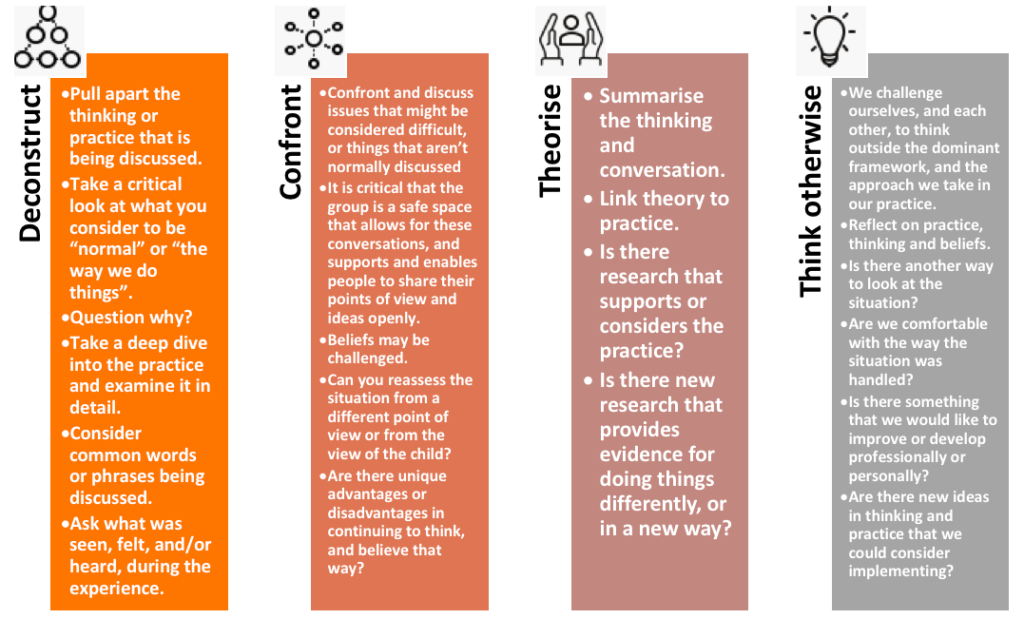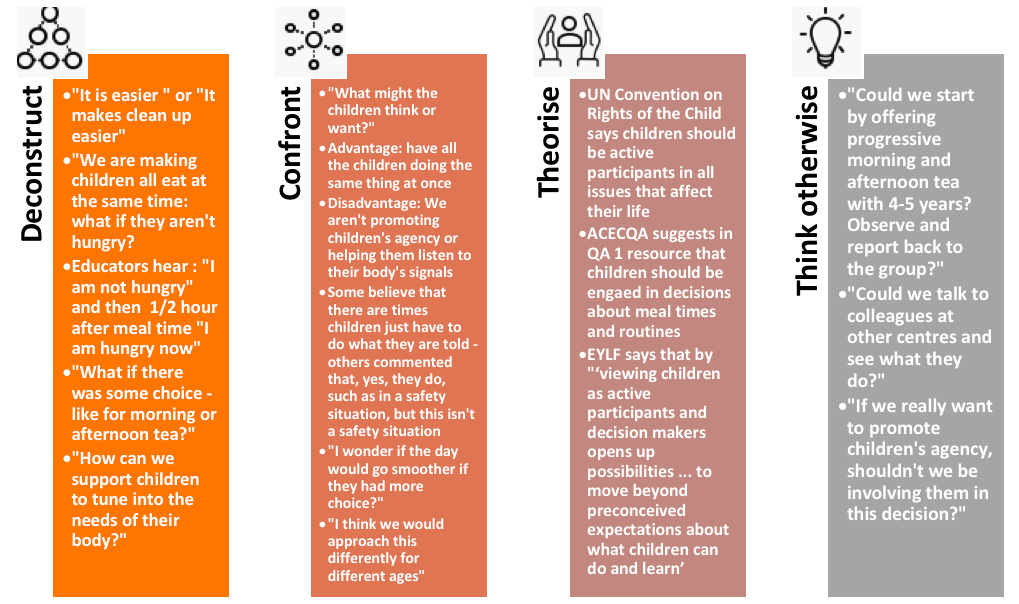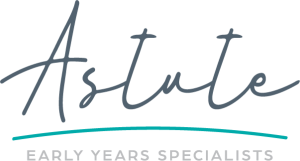How many times a day do you hear the term ‘critical reflection’? Or, “We need to critically reflect on that”? Or, “You haven’t critically reflected”. So, let’s be honest, how many of us actually know what it means to ‘critically reflect’? I think, like most professions, we use a range of terms that many of us don’t actually understand, and we might be too shy, nervous, or worried to admit that and ask for help. There can be lots of reasons for this, but I think Margaret Wheatley has really hit the nail on the head when she says:
Most of us weren’t trained to admit what we don’t know. We haven’t been rewarded for being confused, or for asking questions rather than giving quick answers. We were taught to sound certain and confident. But the only way to understand the world in its complexity is to spend more time in the state of not knowing.
So, let’s be brave and step into the state of not knowing. And you might feel reassured to know that you are not the only one! Based on a 2016 report from ACECQA, Standard 1.2 (Educators and coordinators are focused, active and reflective in designing and delivering the program for each child) is THE standard that sees the most Working Towards ratings out of ALL of the standards across the nation. And more specifically, the two elements that services who have a rating of Working Towards, or Significant Improvement Required, struggle with the most, are 1.2.1 (focuses on the planning cycle, of which critical reflection is a key component) and 1.2.3 (which is all about critical reflection).
But, let’s not get down and gloomy – this isn’t a bad thing, it is actually a great thing – the National Quality Standards have done their job; they have identified an area that we need to focus on, and improve in – like any good quality assurance and improvement system should. What we need to do now is put our hand up, be brave and admit we don’t know what critical reflection is, or how to do it, and work together to learn from and use this wonderful and important process!
So, what does it mean to ‘critically reflect’? More importantly, WHY should we critically reflect? What does it look and feel like? How will it impact the work that we do? Is it just another thing to add to the to do list?
Let’s start with the WHY! Which, funnily enough, is exactly where you start when you engage in critical reflection! WHY should we learn about, and engage in, critical reflection? Well, everyone’s WHY is going to be different – take some time to think about your WHY! My WHY is because I want to:
- work with, and alongside children, to co-create the highest quality education and care experiences,
- make a difference in the present, and future, lives of children,
- grow as a professional and keep learning.
Ok, so we have the WHY (yours might look different to mine, and that’s ok!) HOW does critical reflection help me to achieve my WHYs? According to Cartmel, Macfarlane, & Casley (2012), critical reflection enables us, amongst many other things, to:
- examine experiences and use our evaluations to improve our practice and deepen our knowledge,
- consider principles of early childhood from a range of perspectives, and
- learn from our colleagues.
And when we work together with our colleagues, we can “…draw on one another’s knowledge to solve problems and plan effective approaches to responding to children. Partnership also provides professionals with opportunities for critical reflection, a key component in the creation of knowledge about early childhood learning and development (Flottman, McKernan, & Tayler, 2011, p.8). And, as Wesley and Buysse (2001) report, “…engaging in mutual reflection on one another’s practice assists early childhood professionals to refine their knowledge about early childhood learning and development” (as quoted by Fottman, McKernan, and Tayler, 2011, p.9).
So, let’s piece the WHY and the HOW together. We want to engage in critical reflection because we want to make a difference, work with children to create meaningful learning experiences, and grow as a professional….and we can achieve these things by critically reflecting because it provides us with the opportunity to analyse and improve our practice based on our evaluations, look at early childhood concepts from different viewpoints, and learn from others. And learning from others is vital for being able to engage in critical reflection, as well as growing and developing skills and knowledge as an early childhood professional. So, this all sounds great, and the research supports all of these statements – but WHAT do we actually DO? What is critical reflection? What does it look and feel like? Let’s turn to an Australian guru in the field of critical reflection in the early childhood education and care profession, Jenny Cartmel. Cartmel, along with her colleagues, has developed a wonderful model for engaging in critical reflection, which you can see below:

Let’s use an example and work through this model: Imagine someone in a team meeting suggested that you reconsider children all eating at the same time – perhaps comments made, and discussions had would look a little like this:

This might have taken 45 minutes to an hour to deeply discuss – from here you determine and agree on a course of action: are you going to make a change? Trial something? Or, are you going to keep things as they are? If you don’t change anything, document why! You can use your Quality Improvement Plan to document your engagement in this process of critical reflection, as well as the goals and plans that you have agreed upon.
So, remember, you are not alone! We are all working on this, and many of us are challenged by it! And that is how it should be. The National Quality Standards are a step up from where we used to be, and shifting our perspective to see this change, this push towards growth, as an opportunity, for us and the children and families we work with, is the first step to embracing the state of the not knowing. And it is only from that place that we can flourish, learn with and from our colleagues, and plot a course to achieve our all-important WHYs!
References
ACECQA. (2016). Educational Program and Practice: An analysis of Quality Area 1 of the National Quality Standard: Occasional Paper 1. Retrieved 13 August, 2019 from https://www.acecqa.gov.au/sites/default/files/acecqa/files/Reports/OccasionalPaper1-EducationalProgramandPractice_2.pdf
ACECQA. (n.d.). Topic thirteen: Agency in practice. Retrieved 13 August, 2019 from http://files.acecqa.gov.au/files/NEL/Topic-thirteen-agency_in_practice.pdf
Cartmel, J., Macfarlane, K., & Casley, M. (2012). Reflection as a tool for quality: Working with the National Quality Standard. Early Childhood Australia: Canberra.
Cartmel, J., MacFarlane, K., Casley, M., & Smith, K. (n.d.). Training of Champions for Leading Learning Circles for educators engaged in study. Retrieved 15 July, 2019 from https://childaware.org.au/wp-content/uploads/sites/3/2016/05/Jennifer-Cartmel-Marilyn-Casley.pdf
Flottman, R., McKernan, A., & Tayler, C. (2011). Victorian Early Years Learning and Development Framework: Evidence Paper, Practice Principle 2: Partnerships with professionals. Retrieved 13 August, 2019 from https://www.education.vic.gov.au/Documents/childhood/providers/edcare/pracpartner.pdf
Wheatley, M. (2001). Partnering with confusion and uncertainty. Retrieved 14 August, 2019 from https://www.margaretwheatley.com/articles/partneringwithconfusion.html
